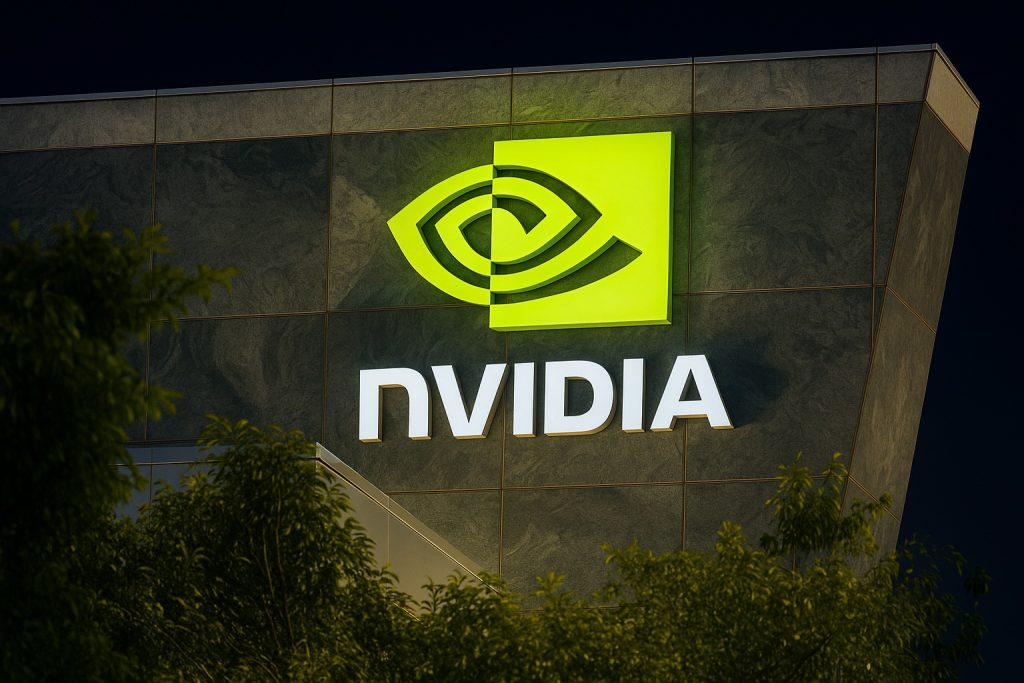- Stock price & momentum: DIS closed around $110.7 on Oct. 17, 2025 [1], roughly flat in 2025 (+0.8% YTD [2]) and up ~1.4% over the past week. Recent days saw modest gains (Oct. 17 +0.72% [3]) after a pullback from midsummer highs.
- Q3 beats & guidance: In Aug 2025 Disney beat Q3 EPS forecasts ($1.61 vs $1.47 est.) and raised FY25 EPS guidance to about $5.85 [4]. Parks and streaming both strengthened; parks operating income jumped ~13% (to $2.5B) [5] and streaming swung to profit (operating income $346M vs loss prior year) [6].
- Streaming strategy: CEO Bob Iger is executing a major streaming overhaul. Starting Oct 8, 2025 Disney will rebrand the international “Star” hub as Hulu, making Hulu a global general-entertainment brand [7] [8]. By 2026 Disney plans a unified “super app” bundling Disney+, Hulu and ESPN. Iger says bundling the trio “will lower churn (and) increase engagement” [9] – a key growth strategy.
- Price hikes: Alongside the integration, Disney+ prices rise Oct. 21, 2025 (e.g. ad-supported Disney+ to $11.99, ad-free to $18.99) [10] [11]. Hulu’s ad tier also goes to $11.99. Bundles (Disney+/Hulu/ESPN) will see $2–3 bumps [12]. Management expects these hikes (and cost cuts from consolidation) to bolster profitability [13] [14].
- Parks & resorts: Disney’s theme parks remain a bright spot. Domestic parks operating income grew ~22% in Q3 [15], with Disney World achieving a record third quarter (bookings +6% for Q4) [16]. KeyBanc notes September park attendance was flat year-over-year [17], and expects Q4 Parks revenue ~+4.9% [18]. Disneyland attendance rose ~4% YoY (benefiting from its 70th anniversary), though WDW slowed vs. summer. Overall, analysts highlight the parks segment as a steady profit engine even as streaming ramps up.
- Major deals: Disney struck big media deals this year: acquiring NFL Network assets (in exchange for 10% ESPN stake) and exclusive WWE streaming rights [19]. These add live sports content to its planned ESPN streaming service (launch Aug 2025 at $29.99/mo) [20]. Observers (e.g. Forrester’s Mike Proulx) expect the early ESPN launch to boost DTC revenue and subscriber engagement [21].
- Analyst sentiment: Wall Street remains bullish. The consensus rating on DIS is a “Moderate Buy” (19 Buys, 8 Holds) [22]. The average 12-month price target is about $133 (implying ~20% upside) [23]. Rosenblatt Capital reiterated a Buy on Oct. 17, 2025 with a $136 target (≈24% above current price) [24]. Goldman Sachs and Needham also reiterated Buy, noting Disney’s streaming turnaround and strong parks outlook (Goldman forecasts Q4 EPS $1.19 vs $1.04 consensus) [25]. Overall, analysts say Disney’s fundamentals look sound – even a Validea quantitative model scores DIS 87% on a P/E/growth framework [26] – and that the stock may be undervalued relative to its growth plan [27] [28].
- Market outlook: With Disney consolidating streaming services and hiking prices, firms expect cost savings of several billion dollars [29] [30]. That, combined with still-healthy parks demand, underpins a positive medium-term outlook. Factors to watch include upcoming Q4 results (due Nov. 13, 2025 [31]), subscriber growth, and how consumers respond to price increases. For now, momentum appears to be building: DIS trades near the low $110s after a choppy 2025, but bulls point to growing profits and analyst targets in the mid-$130s [32] [33].
Steady Stock Performance, Mixed Trends
Disney’s share price has been relatively flat in 2025 after rallying in 2024. As of Oct. 17 the stock sat around $110.7 [34], roughly unchanged from early January. Over the last few days DIS has traded in a narrow $109–112 range [35]. Year-to-date Disney is up only ~0.8% [36], underperforming the broader market rally. In late September and early October the stock dipped into the high-$100s, but analysts say any pullback may present a buying opportunity given Disney’s upcoming catalysts.
Trading volumes have been healthy, with recent sessions showing average daily volume (~10–15 million shares). For example, Oct. 17 saw about 10.1M shares traded [37]. Technical indicators are mixed: short-term momentum is modestly positive, but DIS remains well below its 52-week high near $124 from May.
Strong Q3 and Upgraded Guidance
In early August 2025 Disney reported fiscal Q3 results (April–June 2025) that generally beat expectations [38]. Revenue was about $23.7B (up 2% YoY) and adjusted EPS came in at $1.61, topping estimates (~$1.47). The company cited strong movie releases (e.g. Inside Out 2), resilient Disney+ subscriber adds, and booming parks for the beat. Parks operating income jumped roughly 13% to $2.5B, with domestic parks profit up 22% year-over-year [39]. Notably, Disney World had a record quarter, and bookings for July–Sept (Q4) were up 6% [40], allaying concerns about a slowdown.
Thanks to the Q3 beat, Disney raised its full-year EPS guidance. CFO Hugh Johnston bumped fiscal 2025 EPS to about $5.85 (from prior ~$5.75) [41]. The company now projects high-single-digit percentage growth in earnings for the year. Streaming itself turned profitable: direct-to-consumer operating income was $346M in the quarter (vs. a $19M loss a year earlier) [42]. Disney ended Q3 with 183M combined Disney+ and Hulu subscribers (after adding 2.6M in the quarter) [43], showing steady if not explosive subscriber growth.
On the earnings call, Bob Iger stressed Disney’s strategy: combining Disney+, Hulu and ESPN will “lower churn and increase engagement,” he said [44]. Analysts at Forrester (Mike Proulx) agreed, noting the early launch of ESPN’s standalone streaming service (Aug 2025) should “give Disney’s DTC business a notable lift” [45]. Overall, the results underline that Disney’s core businesses – especially parks and new streaming ventures – are healthy, supporting the bullish analyst stance.
Streaming Overhaul and Price Hikes
Disney is in the midst of a major streaming transformation. After years of running Disney+, Hulu and ESPN+ separately, management is integrating the services to cut costs and boost subscriber retention. Starting Oct. 8, 2025, Disney will rebrand the international “Star” tile in Disney+ (used in Europe/Asia for general entertainment) as Hulu, effectively launching Hulu as a global streaming brand [46] [47]. This reflects Disney’s strategy (partly facilitated by its 2025 buyout of Comcast’s Hulu stake) to make Hulu the go-to destination for adult-oriented content worldwide. By 2026 Disney plans to roll out a unified Disney+ “super app” (in the U.S. and abroad) that incorporates Disney’s family content with Hulu’s and ESPN’s offerings. (The standalone U.S. Hulu app will remain for now, but executives hint it may be phased out after integration [48].)
This streaming consolidation comes with price adjustments. Disney announced that many of its Disney+, Hulu and ESPN plans will cost more starting Oct. 21, 2025 [49] [50]. For example, the ad-supported Disney+ tier jumps $2 (to $11.99/month) and the ad-free tier rises $3 (to $18.99) [51] [52]. Bundles combining Disney+, Hulu and/or ESPN also see $2–3 increases. These hikes are Disney’s second within a year (following modest 2024 raises). Analysts note the impact: while price increases may pressure subscriber growth, they significantly boost average revenue per user. One report highlights that Disney’s streaming profit rose in Q3 after an earlier price hike [53].
Financial media are parsing this move. Benzinga noted Disney’s Oct. 21 hikes “mark the second round of streaming price increases in a year” and estimated Disney+ ad-supported will now cost $11.99 [54]. The company signaled in Q3 earnings that it expects modest DTC growth in Q4 as these changes roll out. Overall, investors seem to accept the trade-off: Wall Street largely supports the hikes as part of Disney’s path to profitability. In fact, Goldman Sachs reiterated that Disney will beat Q4 EPS consensus ($1.19 vs $1.04 est.), citing strong Direct-to-Consumer and park businesses [55].
Theme Parks and Experiences
Disney’s parks & resorts have arguably outperformed expectations, helping to offset weakness in traditional TV and soft growth in streaming. In Q3, domestic parks operating income surged 22% (to ~$2.5B) [56], as more guests visited Disney World and Disneyland. It was Disney World’s strongest quarter ever, even as Universal’s new Orlando park opened. Attendance trends have been mixed: an Investing.com/KeyBanc note (mid-Oct) reports flat YoY attendance in September, with Disneyland +4% and Disney World roughly flat [57]. That’s a slowdown from prior quarters, partly seasonal, but guest per-capita spending continues to grow. KeyBanc expects Disney’s Q4 domestic parks revenue will rise ~4.9% YoY (below consensus 7.1%) [58], reflecting a deceleration in attendance to ~–1% YoY. In short, parks are still growing but may be nearing a plateau after pandemic-era rebounds.
Management has expanded the parks business for future growth. New rides and resorts keep attracting visitors (e.g. the Avengers Campus at California and Avengers Campus in Paris, plus the upcoming Tron coaster). Disney Cruise Line is also expanding its fleet. CFO Hugh Johnston emphasized on the last call that parks bookings remain strong: he noted record Q3 results and a healthy 6% increase in Q4 bookings [59]. These trends give confidence that the parks division will continue to deliver profits even if streaming requires more investment.
Analyst Commentary and Forecasts
Wall Street analysts generally endorse Disney as a buy. The consensus is “Moderate Buy” [60]: 19 buy vs. 8 hold ratings. MarketBeat reports an average 12-month target of about $133 for DIS [61], roughly 20% above the current price. Rosenblatt Capital on Oct. 17 maintained a Buy rating with a $136 target (implying ~24% upside) [62]. Other firms echo a similar range: the high end of targets is near the mid-$140s, with few dropping below $110 [63].
Goldman Sachs analyst Michael Ng (cited by Benzinga) reiterated a Buy in late summer, highlighting Disney’s new sports streaming platform and subscriber reach as growth drivers [64]. Key investment banks have raised their EPS estimates alongside management: the newly guided $5.85 FY EPS implies solid earnings power. Several analysts point out that Disney’s streaming turnaround is under way – Q3 produced a healthy profit – and that cost synergies from integration could improve margins by up to $3+ billion annually [65].
In the short term, some uncertainty remains. Investors will be watching the November 2025 earnings for signs that subscriber growth holds up despite price hikes. There is also sensitivity around Disney’s TV networks (linear ad revenue continues to decline). Still, the dominant view is that Disney’s pivot to streaming (plus live sports) and reliable theme-park cash flows justify a premium valuation. As one Wall Street model notes, Disney scores highly on growth-adjusted P/E metrics [66]. With the stock trading low-110s, even modest positive surprises could propel it toward the $130s in 2026.
Outlook
Most analysts see Disney’s fundamentals strengthening. The long-term “mojo” of Disney’s brands – Marvel, Star Wars, Pixar, etc. – plus ongoing cost discipline, support a positive outlook. Risks include heightened competition in streaming (from Netflix, etc.) and macro pressures on consumer spending. But near-term, sentiment is upbeat: institutional holders have been adding to DIS (Goldman, Vanguard among big buyers [67]), and the put/call ratio is favoring calls [68].
In summary, Disney’s stock is modestly outperforming expectations as of Oct 18, 2025. The convergence of better-than-feared earnings, a clear streaming integration plan (with higher prices), and strong parks results has many investors optimistic. With analysts’ price targets around $130–140, DIS may have significant room to run if the company hits its marks. As one analyst put it: Disney’s strategy “creates an impressive package of entertainment” that should translate into stronger profits and higher equity value [69].
Sources: Financial reports and media coverage (Reuters [70] [71]; Benzinga [72] [73]; ts2.tech analysis [74] [75]) and analyst data (MarketBeat [76], Fintel/Nasdaq [77], Investing.com [78] [79]). Information is current as of Oct. 18, 2025.
References
1. www.marketbeat.com, 2. www.benzinga.com, 3. stockanalysis.com, 4. www.reuters.com, 5. www.reuters.com, 6. www.reuters.com, 7. ts2.tech, 8. ts2.tech, 9. www.reuters.com, 10. ts2.tech, 11. www.benzinga.com, 12. www.benzinga.com, 13. ts2.tech, 14. www.benzinga.com, 15. www.reuters.com, 16. www.reuters.com, 17. www.investing.com, 18. www.investing.com, 19. www.reuters.com, 20. www.reuters.com, 21. www.reuters.com, 22. www.marketbeat.com, 23. www.marketbeat.com, 24. www.nasdaq.com, 25. www.investing.com, 26. ts2.tech, 27. www.investing.com, 28. www.nasdaq.com, 29. ts2.tech, 30. www.investing.com, 31. chipandco.com, 32. www.marketbeat.com, 33. www.nasdaq.com, 34. www.marketbeat.com, 35. stockanalysis.com, 36. www.benzinga.com, 37. stockanalysis.com, 38. www.reuters.com, 39. www.reuters.com, 40. www.reuters.com, 41. www.reuters.com, 42. www.reuters.com, 43. www.reuters.com, 44. www.reuters.com, 45. www.reuters.com, 46. ts2.tech, 47. ts2.tech, 48. ts2.tech, 49. ts2.tech, 50. www.benzinga.com, 51. ts2.tech, 52. www.benzinga.com, 53. ts2.tech, 54. www.benzinga.com, 55. www.investing.com, 56. www.reuters.com, 57. www.investing.com, 58. www.investing.com, 59. www.reuters.com, 60. www.marketbeat.com, 61. www.marketbeat.com, 62. www.nasdaq.com, 63. www.marketbeat.com, 64. www.benzinga.com, 65. ts2.tech, 66. ts2.tech, 67. www.nasdaq.com, 68. www.nasdaq.com, 69. ts2.tech, 70. www.reuters.com, 71. www.reuters.com, 72. www.benzinga.com, 73. www.benzinga.com, 74. ts2.tech, 75. ts2.tech, 76. www.marketbeat.com, 77. www.nasdaq.com, 78. www.investing.com, 79. www.investing.com







